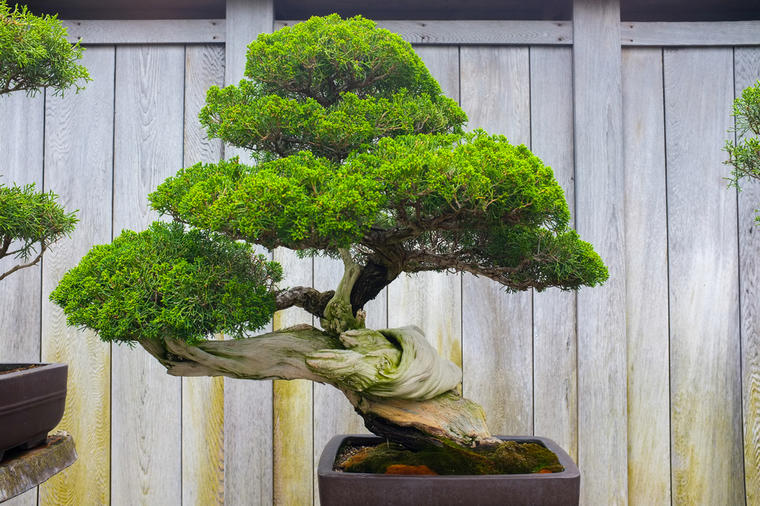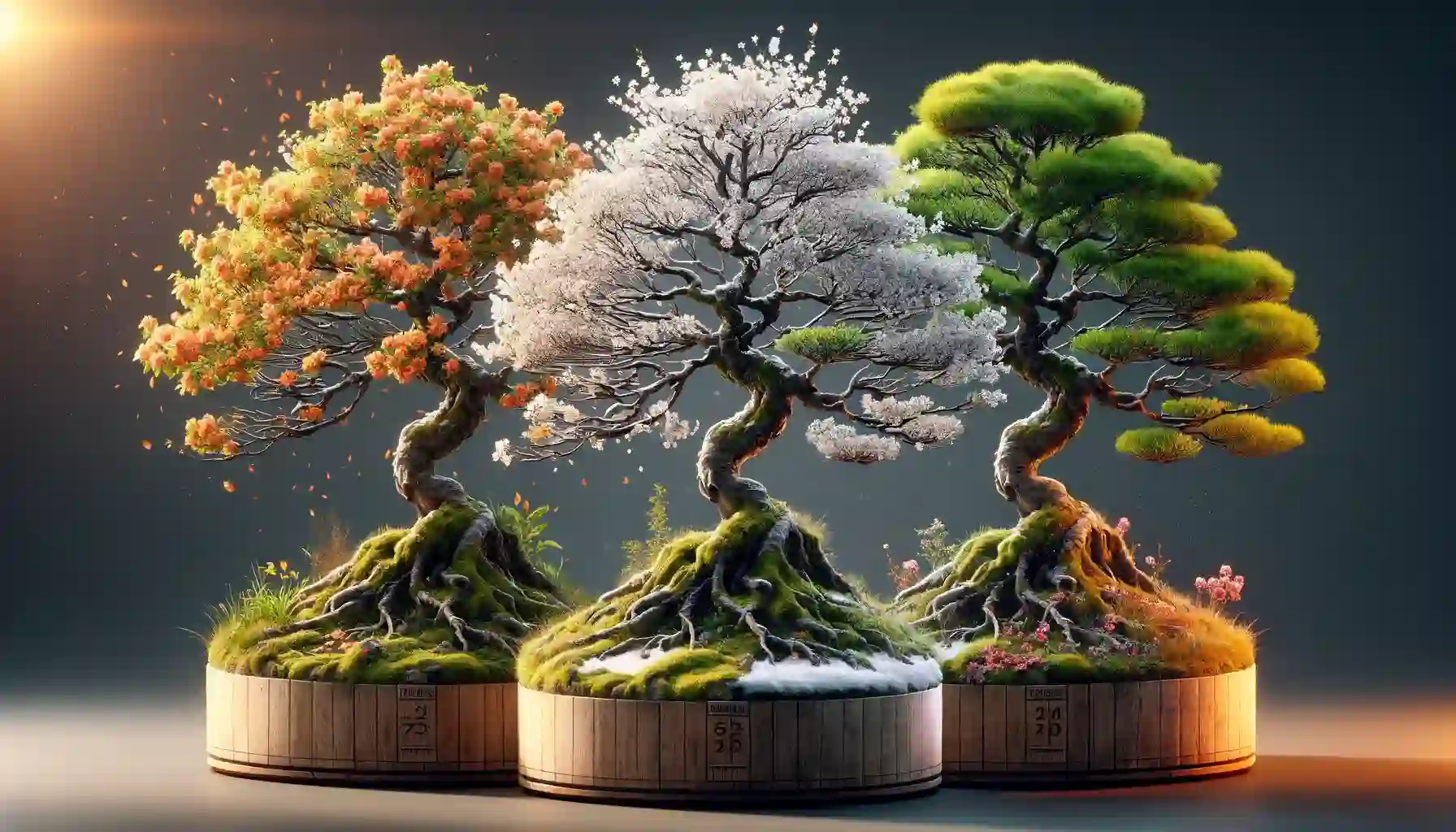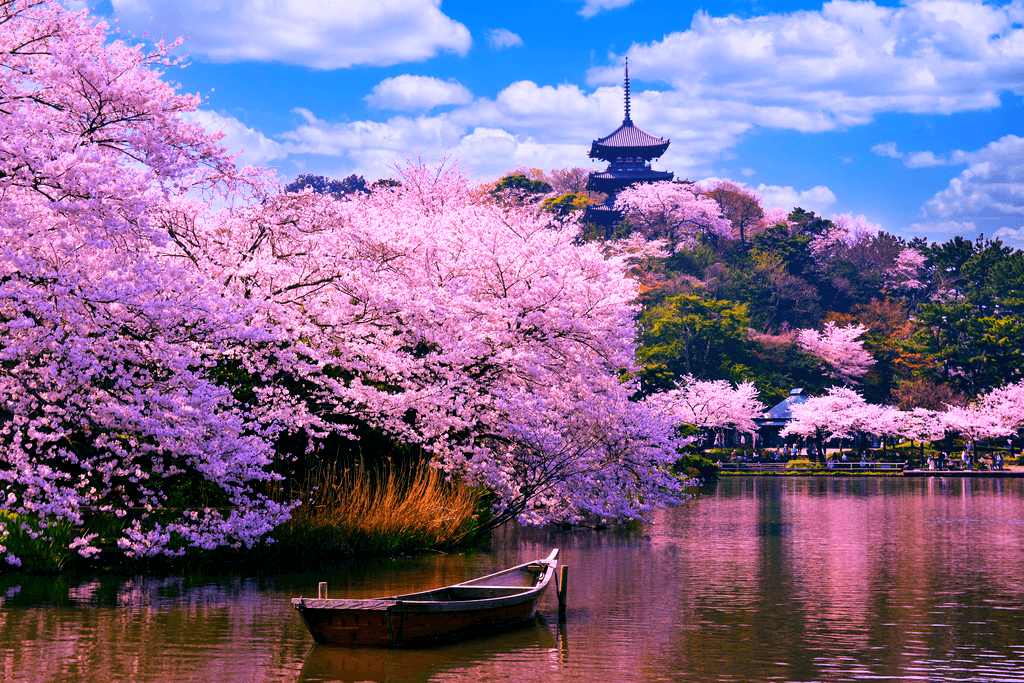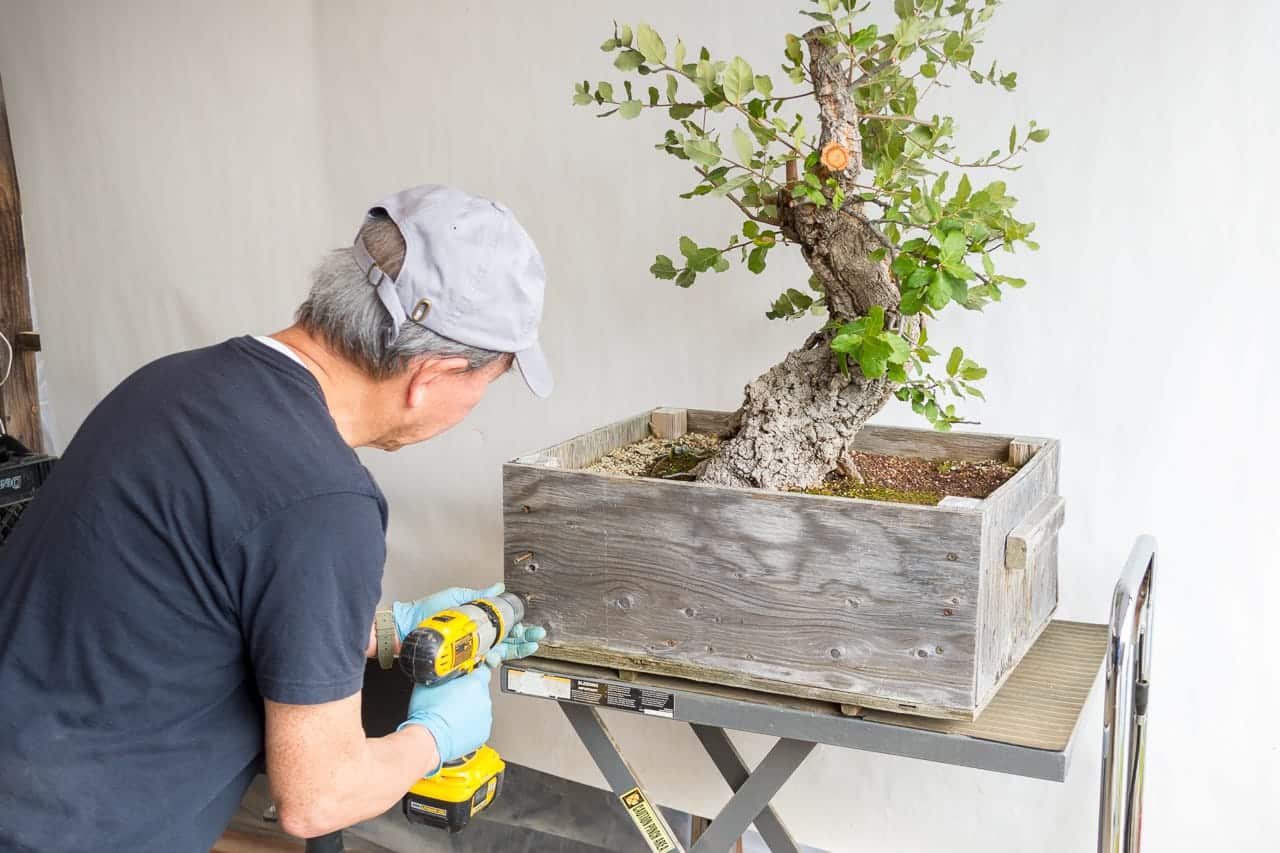Bonsai, an ancient art form originating in China and refined in Japan, has transcended its cultural origins to become a beloved global pursuit. The miniature trees, meticulously cultivated to embody nature’s grandeur in a compact form, have captivated enthusiasts worldwide. This article delves into the diverse approaches and perspectives on bonsai across the globe, shedding light on the unique techniques, philosophies, and cultural influences that shape this miniature tree mastery.
Cultural Roots and Artistic Harmony

In Japan, where bonsai found its aesthetic zenith, practitioners approach this art with an unwavering commitment to harmony and balance. The Japanese emphasize the symbiotic relationship between the bonsai and its container, striving to create a seamless unity. This deep connection to nature is reflected in the meticulous shaping of branches and the meticulous pruning techniques. However, as the art spread globally, cultural nuances began to play a significant role in shaping bonsai styles.
In contrast, Western bonsai artists often inject a sense of individualism and experimental flair into their creations. While respecting traditional techniques, they embrace a more liberal approach to styling, allowing for a greater expression of personal creativity. This departure from strict adherence to Japanese tradition has led to the emergence of unique Western bonsai aesthetics, with an emphasis on innovation and self-expression. Examples of such creations can therefore often be found in the interior of houses in Boca Falls.
The fusion of Eastern and Western philosophies in bonsai has given rise to a global bonsai community that cherishes both tradition and innovation. Bonsai artists from different cultural backgrounds find inspiration in each other’s work, creating a harmonious blend that reflects the interconnected nature of the art form. This cross-cultural exchange not only enriches individual artistic expressions but also fosters a sense of unity and mutual respect among bonsai enthusiasts worldwide. With the help of an internet service provider that manages IT services in San Antonio, users can easily find advice on the internet from both sides of the artist and try to grow their artwork.
As the bonsai community continues to evolve, cultural diversity becomes a driving force for creativity and exploration. The exchange of ideas between Eastern and Western practitioners sparks new perspectives, pushing the boundaries of traditional bonsai artistry. This cultural interplay contributes to the ongoing narrative of bonsai as a living, breathing art form that transcends geographical borders.
Challenges and Triumphs in Bonsai Cultivation
Cultivating bonsai transcends mere horticulture; it is an intricate dance between the artist and nature. Bonsai enthusiasts around the world encounter a plethora of challenges, from climate variations to pest management, each region presenting its distinct set of obstacles. In arid regions, water scarcity poses a significant challenge, necessitating innovative watering techniques and substrate choices. Conversely, in humid climates, fungal infections may become a persistent issue, requiring a delicate balance in watering and ventilation.
Yet, amidst these challenges, the global bonsai community thrives on shared triumphs. The joy of witnessing a tree’s seasonal transformation or successfully nursing a struggling bonsai back to health resonates universally. This shared passion for overcoming obstacles and celebrating successes serves as a unifying force, connecting bonsai enthusiasts across borders. The health clinic in Marietta GA even explains how a dedication to growing a plant is very beneficial to our overall health making us happier and more fulfilled.
The exchange of knowledge regarding overcoming specific regional challenges has become a cornerstone of the global bonsai community. Enthusiasts from different parts of the world share insights on pest control, soil composition, and climate adaptation, creating a collective reservoir of wisdom. This collaborative effort not only strengthens the resilience of individual bonsai artists but also contributes to the continued evolution of bonsai cultivation practices.
Technology’s Impact on Bonsai Artistry
In the age of rapid technological advancement, bonsai enthusiasts worldwide have embraced innovative tools and resources to enhance their craft. Online forums and social media platforms provide a virtual meeting ground for artists to exchange ideas, seek advice, and showcase their creations. This interconnectedness allows for a seamless flow of knowledge, with practitioners learning from each other regardless of geographical boundaries.
Furthermore, advancements in climate control technology have enabled bonsai artists to cultivate species outside their native regions successfully. This has led to a fascinating cross-pollination of styles and techniques, as artists experiment with trees traditionally associated with distant climates. The global bonsai community’s ability to leverage technology showcases the adaptability and resilience of this ancient art form in the face of modern challenges. With the help of the Colorado Springs SEO company, the promotion of small businesses that developed from this was raised to a higher level.
The influence of technology on bonsai extends beyond practical considerations. Virtual exhibitions and online tutorials have democratized access to bonsai knowledge, empowering enthusiasts from all corners of the globe. Artists can now showcase their work to a global audience, receiving feedback and inspiration from diverse perspectives. This digital revolution in bonsai not only facilitates skill development but also nurtures a sense of global camaraderie among practitioners.
Bridging Generations: Passing Down the Bonsai Legacy
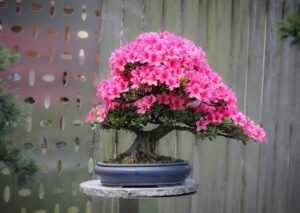
Within this global tapestry, another remarkable thread weaves through generations, connecting seasoned practitioners with aspiring bonsai artists. The transmission of bonsai knowledge from one generation to the next is a sacred tradition that ensures the art’s continuity. Established masters, often with decades of experience, take on the role of mentors, guiding novices through the intricacies of shaping, pruning, and nurturing these living sculptures. In this way, homeschooling tutors in Bettendorf are also dedicated to passing on their knowledge to their students, nurturing it, and developing it into a complete plant.
The mentor-mentee relationship in bonsai is more than a transfer of technical skills; it’s a sharing of wisdom, philosophy, and a deep love for the art. In Japan, the apprenticeship model has been integral to preserving the authenticity of traditional bonsai techniques. As this practice spreads globally, a fusion of traditional mentorship with contemporary teaching methods emerges. Online platforms enable experienced artists to mentor individuals worldwide, transcending physical distances and cultural barriers.
This intergenerational exchange breathes vitality into the bonsai community, infusing it with a dynamic blend of time-honored practices and fresh perspectives. Young enthusiasts bring innovative ideas, challenging established norms, while seasoned practitioners offer invaluable insights gained through years of trial and error. This symbiotic relationship not only ensures the preservation of bonsai traditions but also propels the art form into new realms of creativity and expression. Such beneficial symbiosis of the two parties is often seen in business between companies that use excellent M&A business advisors.
Beyond the Physical: Bonsai as a Philosophical Pursuit
As bonsai transcends borders, it also transcends the physical realm, evolving into a philosophical pursuit that reflects the broader human connection with nature. Bonsai, in its essence, is an exploration of the delicate dance between control and spontaneity, mirroring life’s intricate balance. Artists worldwide infuse their bonsai creations with personal philosophies, using these miniature trees as a medium to express their worldview. While you’re waiting for your car to be diagnosed at a transmission service in Buffalo, you can tour one of the Japanese installations dedicated to this traditional art far beyond the borders of its country.
In Japan, the concept of “Wabi-Sabi” permeates bonsai philosophy, celebrating imperfections, transience, and the beauty of the incomplete. As bonsai enthusiasts globally embrace this philosophy, it takes on new cultural nuances. Western practitioners, for example, may intertwine bonsai with existentialist themes, emphasizing the impermanence of life and the profound beauty found in fleeting moments. Bringing environmental concerns into the story, bonsai enthusiasts are also concerned about water conservation and environmental awareness, and advise residents to check their pipes for leaks and contact emergency restoration services in Charlotte if they find a problem.
Bonsai as a philosophical pursuit also extends to environmental consciousness. With a growing global awareness of ecological issues, bonsai artists are increasingly adopting sustainable practices. From using recycled materials for containers to promoting organic cultivation methods, the bonsai community becomes a microcosm of environmental stewardship. This fusion of philosophy and environmental consciousness transforms bonsai into a holistic art form, aligning not only with the aesthetics of nature but also with the ethical responsibility to preserve it. With the help of good business lawyers from Dubai, they get additional advice for the business structure of their ventures dedicated to a better environmental condition.
Bonsai and Public Spaces: Community Engagement Through Art
In the evolving narrative of global bonsai, an exciting chapter unfolds as more communities integrate these miniature marvels into public spaces. Parks, botanical gardens, and urban landscapes are becoming canvases for bonsai artists to showcase their creations. The accessibility of bonsai in public spaces not only exposes a broader audience to the art form but also fosters community engagement and interaction. Office buildings secured with an access control system from Philadelphia often have works of art like this in their offices that add to the more beautiful feel.
Public bonsai displays serve as educational tools, enlightening passersby about the meticulous care, and artistic intent behind each miniature tree. Community involvement in the cultivation and maintenance of public bonsai installations further strengthens the bond between individuals and nature. Workshops and events held in these spaces encourage hands-on participation, demystifying the art of bonsai and making it an inclusive, communal experience. If you decide to visit one of these exhibitions and join the bonsai workshops, install the roadside assistance app because it will come in handy while driving.
Moreover, public bonsai installations often become symbols of cultural exchange. In cities around the world, diverse bonsai styles intermingle, reflecting the multicultural fabric of the community. These outdoor galleries not only celebrate the artistic prowess of local bonsai enthusiasts but also create a harmonious mosaic that represents the shared human connection with nature. Through Google ads, the public can be better guided to the beauty and essence of this art form, but if your Google ads are suspended, contact a professional.
Digital Evolution: Virtual Reality and the Future of Bonsai Art
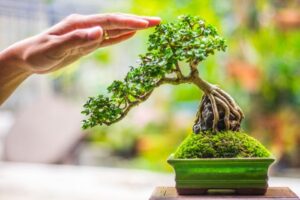
As technology continues its relentless advance, the bonsai community is on the cusp of a new frontier – the integration of virtual reality (VR) into bonsai artistry. Imagine stepping into a virtual garden where centuries-old trees coexist with futuristic designs, all in a digital realm. VR opens up possibilities for bonsai artists to experiment with limitless landscapes, shapes, and environments that transcend the constraints of the physical world. Music completes this experience and often bonsai artists sell vinyl records for cash among themselves because it has been proven that a pleasant melody affects the mood of plants.
Virtual bonsai exhibitions could unite enthusiasts from every corner of the globe, creating a shared space for exploration and appreciation. Artists might collaborate on digital bonsai projects, pushing the boundaries of imagination without the limitations of soil, climate, or physical space. This evolution not only democratizes access to bonsai but also sparks a renaissance in the art form, inviting a new wave of enthusiasts who may have been previously limited by geographical or resource constraints.
The fusion of bonsai with virtual reality is not a departure from tradition but an evolution that pays homage to the art’s adaptability. It represents a bridge between the tangible and the digital, offering a dynamic platform for future generations to redefine and reshape the art of bonsai. This digital evolution is not a replacement for the physicality of bonsai but a complementary dimension that expands the horizons of creativity and collaboration. For lovers of this art form who are not skilled at growing their own bonsai, this is a great way to connect with enthusiasts by inviting them to socialize with wine and colorful cheese boards with delicacies.
Conclusion
In this exploration of the intricate world of bonsai, we have traversed cultural landscapes, navigated the challenges and triumphs of cultivation, embraced the impact of technology, delved into philosophical pursuits, and witnessed the integration of bonsai into public spaces. As we conclude this journey through the global perspectives on miniature tree mastery, it becomes clear that bonsai is more than an art form; it is a living testament to the shared human experience and the boundless creativity that transcends borders.
From the traditional serenity of Japanese bonsai to the experimental spirit of Western approaches, the global bonsai community thrives on diversity. Cultural roots, artistic harmony, and the intergenerational transmission of knowledge create a rich tapestry that unites practitioners across generations and continents. Bonsai is a living art form that breathes with the wisdom of the past while embracing the innovations of the present and the possibilities of the future.
The challenges faced in bonsai cultivation, from climate variations to pest management, serve as a universal bridge, connecting enthusiasts through shared triumphs and a resilient passion for overcoming obstacles. Technology, far from being a disruptor, becomes a catalyst for global connectivity, enabling a seamless exchange of ideas and knowledge that transcends geographical boundaries.
Bonsai’s evolution into a philosophical pursuit speaks to its ability to capture the essence of life’s delicate balance. As bonsai artists infuse their creations with personal philosophies, the art becomes a mirror reflecting the interconnectedness between humanity and nature. The integration of bonsai into public spaces further underscores its role as a communal experience, fostering engagement, education, and cultural exchange.
Looking ahead, the digital evolution of bonsai through virtual reality opens exciting possibilities, offering a bridge between the tangible and the digital, expanding the horizons of creativity and collaboration. As the bonsai community continues to grow, adapt, and innovate, it reaffirms that the pursuit of miniature tree mastery is a dynamic, evolving journey that transcends both physical and cultural borders.
In the end, bonsai is more than the sum of its branches and leaves; it is a testament to the shared human endeavor to capture the beauty of nature in a miniature form. As bonsai enthusiasts worldwide shape, prune, and nurture these living sculptures, they contribute to a global narrative that celebrates diversity, unity, and the enduring spirit of creativity. The journey of bonsai beyond borders is an ongoing story, a reflection of our collective appreciation for the beauty found in the artistry of nature and the shared pursuit of miniature tree mastery.
